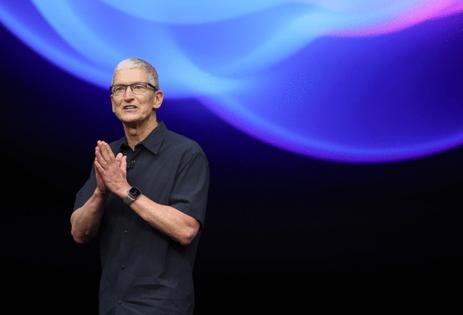Commentary: Apple CEO Tim Cook is right. The US manufacturing workforce is in crisis
Published in Op Eds
As we were preparing for the International Manufacturing Technology Show — IMTS 2024 — last month in Chicago, the largest gathering of the creators, builders and drivers of manufacturing in the Western Hemisphere, news came out that Apple CEO Tim Cook had made a startling statement about America’s workforce.
Decrying what he called the “popular conception” that companies come to China because of low labor costs, Cook said “the reason is because of the skill, and the quantity of skill in one location.” He added: “In the U.S., you could have a meeting of tooling engineers, and I’m not sure we could fill the room. In China, you could fill multiple football fields.”
My company, Tallo, understands Cook’s concern and forecast what has been defined today by the World Economic Forum as a workforce crisis. Based on the latest numbers, there has never been a time when the need to match job seekers with the nation’s most needed jobs has been as critical.
The Manufacturing Institute says that manufacturers need to fill 4 million jobs, over half of which could go unfilled unless more young people pursue modern manufacturing careers. Indeed, according to a recent Boston Consulting Group survey, there is a growing gap between supply and demand for engineering talent that puts the progress of important industries at risk and threatens to have a tremendous negative impact on the economy — equal to nearly 40% of the projected gross domestic product impact of all talent gaps in the U.S. through 2030.
While the U.S. is projected to need about 400,000 new engineers every year, the next-generation skill sets that those engineers will require are sorely lacking, creating the possibility that nearly a third of all engineering roles will remain unfulfilled each year through at least 2030.
This persistent talent gap risks short-circuiting the progress of several essential industries.
A major reason for the shortfall is that only about 13% of high school students who expressed an interest in engineering complete a university degree in engineering. One reason, said the Boston Consulting Group, may be that educational institutions and employers operate on radically different timelines — with institutions educating the next generation, even as employers seek ready-to-deploy talent today. The two may also have different views about whether professors or future employers should have the final say on what students should learn.
Even more frustrating, fewer than half of the 200,000 U.S. students who complete engineering degrees go on to pursue an engineering role, and only 37% of students begin with an engineering career after completing an engineering degree. Only 27% of women and just 41% of men who graduated with an engineering degree between 2006 and 2010 were still working in engineering jobs in 2021.
But engineering is hardly the only manufacturing field in which the U.S. is facing major shortfalls of qualified talent.
According to a recent poll of 250 global executives conducted by MIT Technology Review Insights, 64% of respondents said candidates for their information technology and other tech jobs lack necessary skills or experience, and a 2021 Gartner survey of IT executives separately found that 64% believed the tech talent shortage is the most significant barrier to the adoption of emerging technologies.
It is bad enough that prohibitively high costs for a four-year degree are shrinking the talent pool from underserved communities. What is worse is that “what’s being taught in engineering schools is sometimes 10 years behind the current tech landscape,” Subbaraman Balasubramanyan, senior vice president of IT consulting firm HCLTech, told the Massachusetts Institute of Technology.
In 2016, 70% of America’s electricians were already pointing to a looming severe shortfall of new entrants into this vital field. By 2022, the shortfall had become critical, as older electricians retired. Field service management company Jobber found in a recent survey that 74% of 18- to 20-year-olds attached a stigma to the trades, and just 5% said their parents wanted them to pursue a trade.
The irony is that, while the average starting salary for college graduates today is about $56,000 and apprentice electricians on average earn about $50,000 (including overtime) in their first year, they are already at least $200,000 up on college students after four years while also attending a four- to five-year part-time training course that can lead to a journeyman’s license. Unlike those college students, they are also not saddled with tens of thousands of dollars in student loan debt.There are real needs out there in the marketplace that they can explore, often in fields they had not initially considered.
It is critical that we create a robust pipeline for young people, especially those in underserved communities, to explore and build career paths with confidence.
____
Allison Danielsen is CEO of Tallo, a free virtual platform that helps fill the growing gaps in workforce talent.
___
©2024 Chicago Tribune. Visit at chicagotribune.com. Distributed by Tribune Content Agency, LLC.




























































Comments